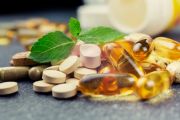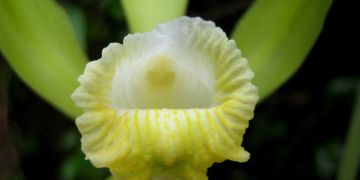History
Vanilla is a flavor derived from a Mexican species of orchid called flat-leaved vanilla (Vanilla planifolia). This plant favors the hot, sticky, and wet climates in Central America and Mexico. Vanilla was first cultivated by the Totonac Indians of eastern Mexico. The Aztecs conquered the Totonac in the 1400s and adopted the plant for their own purposes, even making the Totonac pay tribute to the Aztec kings in vanilla beans. In 1520, Spanish conquistador Hernan Cortes conquered the Aztecs and brought, along with plunder and other material goods, vanilla beans back to Spain. Cortes, then, is responsible for making vanilla an international commodity. The word ‘vanilla’ comes from the Spanish word ‘vainilla,’ which is Spanish for little black pod. For approximately 80 years, vanilla was the exclusive province of the rich, famous, and royal. That is, until 1602, when an apothecary to Queen Elizabeth I named Hugh Morgan started using vanilla as a flavoring, thus beginning the gradual foothold vanilla would attain as a popular flavoring and scent.
How Vanilla is Grown
Generally speaking, commercially viable vanilla will come only from good vines that have gone through a careful method of production. Vanilla farmers need to ensure that plant height, shade necessities, organic material present in the soil, and a tree to grow the vanilla vine on are all met before planting their crop.
Harvesting Vanilla
Despite the fact that vanilla beans grow quickly on the orchid’s vine, they are not ready for harvest until the reach maturity, which is at six months. In most cases today, the vanilla used for herbal purposes is grown on vanilla plantations, where farmers strip the beans from the vine, and then cure them by killing, sweating, slow-drying, and conditioning them. The same curing process is undertaken with every pod, otherwise the beans would not be fit for commercial purposes.
Main Active Compounds
The main component of vanilla is vanillin. There are other constituents present including sugars, resins, and oils. Vanilla also contains approximately 150 aromas, many of which are present in only trace amounts. Vanillyl ethyl ether, acetic acid, p-hydroxybenzaldehyde, and caproic acid are among the chemicals present.
Medicinal Properties
The medicinal potential of vanilla has been the subject of extensive scientific study over the past two decades. Studies have demonstrated that vanillin, the primary compound in vanilla, has anti-carcinogenic properties. More specifically, reports show that vanillin eradicates human cancer cells limits movement of cancer cells from the original site to other parts of the body. Vanilla essential oil has proved to be an effective mood lifter, courtesy of its rich, yet unobtrusive scent. Vanillin-rich oil also works in the bedroom as an aphrodisiac, where scientific studies have confirmed that vanilla oil cures patients suffering from impotency, libido loss, sexual frigidity, and erectile dysfunction. The oil works to stimulate secretions of human hormones to help promote arousal.





